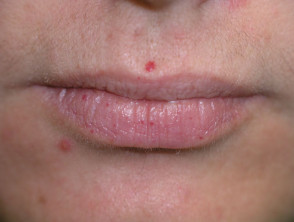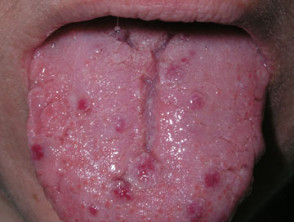DermNet provides Google Translate, a free machine translation service. Note that this may not provide an exact translation in all languages
Quiz
Telangiectasia – 10 cases
This quiz tests your skills in identifying different types of telangiectasia in 10 cases.
Telangiectasia refers to permanently dilated small blood vessels (arterioles, capillaries and venules). They present as small linear, arborising, spider or papular red lesions. They may be congenital or acquired, and localised, unilateral or widespread. Genetic, hormonal and environmental factors may be important in their pathogenesis. Primarily of cosmetic significance, they may be safely ignored or treated by electrosurgery or, preferably, by an appropriate laser.
For each of the ten cases, study the image(s) and then answer the questions. You can click on the image to view a larger version if required.
Each case should take approximately 2 minutes to complete. There is a list of suggested further reading material at the end of the quiz.
When you finish the quiz, you can download a certificate.
Case 3
Sign up to the newsletter
© 2024 DermNet.
DermNet does not provide an online consultation service. If you have any concerns with your skin or its treatment, see a dermatologist for advice.

